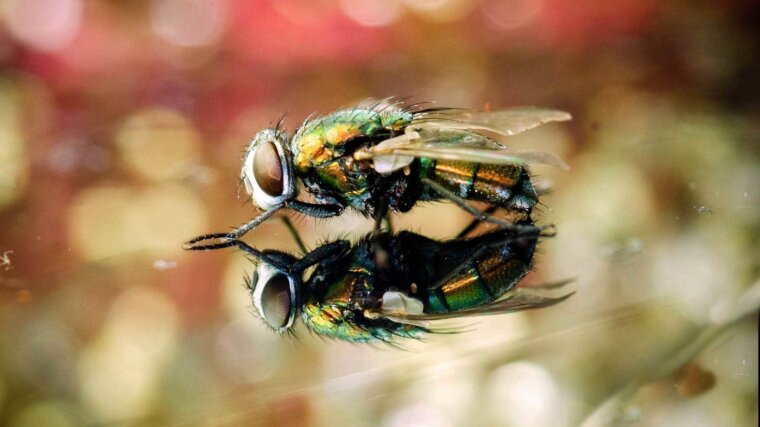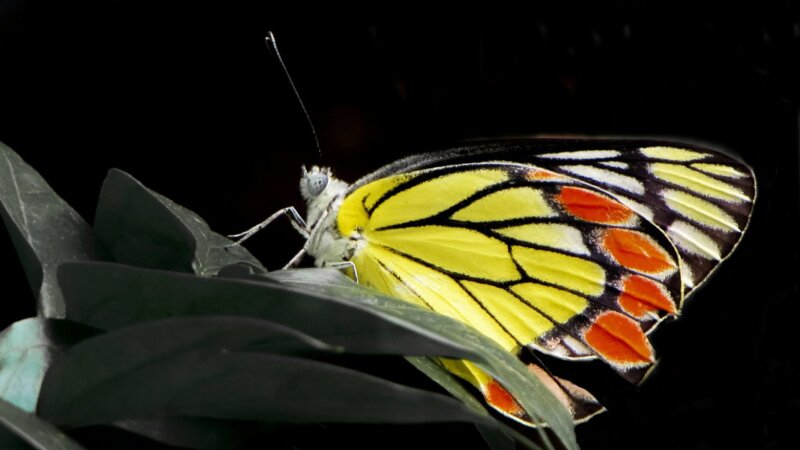
- Life
- Research
Published: | By: Sebastian Tilch
Insect numbers have been declining over the past decades in many parts of the world. Protected areas could safeguard threatened insects, but a team of researchers led by the German Centre for Integrative Biodiversity Research (iDiv), the Friedrich Schiller University Jena, the Helmholtz Centre for Environmental Research (UFZ), and the University of Queensland now found that 76 % of globally assessed insect species are not adequately covered by protected areas worldwide. In the journal “One Earth”, the researchers encourage decision-makers to give more consideration to the by far biggest species group in implementing the new goals of the UN Convention on Biological Diversity.
Over 80 % of all animal species are estimated to be insects. This species group plays crucial roles in almost every ecosystem. Insects pollinate more than 80 % of plants, play a key role in the natural nutrient cycle and in pest control, and are a major source of food for thousands of vertebrate species. However, insects have been historically overlooked by conservation programmes, and they comprise only 8 % of the species assessed for the IUCN Red List of Threatened Species.
Previous studies proved that protected areas can preserve insect populations if they are tailored to that goal and coincide with their distribution areas. To determine what proportion of insect species is covered by protected areas, a team of researchers led by iDiv, UFZ and the Universities of Jena and Queensland overlaid species distribution data of 89,151 insect species registered in the largest biodiversity data repository, the Global Biodiversity Information Facility (GBIF), with global maps of protected areas. A benchmark for sufficient species coverage by protected areas is provided by the IUCN Global Standards for the Identification of Key Biodiversity Areas.
The researchers found that 76 % of these insect species are inadequately represented in protected areas, including several critically endangered species such as the Australian dinosaur ant (Nothomyrmecia macrops), the crimson Hawaiian damselfly (Megalagrion leptodemas), and the harnessed tiger moth (Apantesis phalerata). Furthermore, the global distributions of 1,876 species from 225 families do not overlap with protected areas at all.
First author Dr Shawan Chowdhury, a postdoctoral researcher at the University of Jena, iDiv, and UFZ was surprised by the degree of underrepresentation. “A lot of insect data come from protected areas, so we thought that the proportion of species covered by protected areas would be higher,” says Chowdhury. “The shortfall is also much more severe than for vertebrate species, for which a similar analysis found that 57 % were inadequately covered.”
In some regions, insects were better protected than others
Relatively high proportions of insect species achieved adequate protection in Amazonia, South and Central America, Sub-Saharan Africa, Western Australia and Central Europe, but protection fell short for many species in North America, Eastern Europe, South and Southeast Asia and parts of Australia.
“Insects have often been neglected as a focal group when designating new protected areas,” says Chowdhury. “The focus is usually on vertebrates, and their requirements for habitat are usually quite different from insects. For a species group that contains a vast proportion of the animal kingdom and performs diverse ecosystem functions, that is worrying.”
The member states of the UN Convention on Biological Diversity (CBD) just have approved a new Global Biodiversity framework. Target 3 calls for at least 30 per cent of terrestrial, inland water, and coastal and marine areas to be effectively conserved through protected areas. According to the authors, insects should be given much more consideration in the selection and planning of new areas.
Data on insect distributions by citizen science
“However, in order to implement this globally and to effectively evaluate success, much better data is needed, especially in regions with high biodiversity, such as the tropics, which have so far been completely underrepresented in monitoring programmes,” says senior author Prof. Richard Fuller from the University of Queensland. “Citizen science could have an enormous impact in filling the data gap on insect distributions. Scientists and policy makers must now step up and help with this challenge of identifying sites of importance for insect conservation.”
This research was financed inter alia by the Deutsche Forschungsgemeinschaft (DFG; FZT-118).
Delias eucharis, a medium-sized butterfly found in many areas of South and Southeast Asia, is an example of an under-represented insect species in protected areas and has not yet been evaluated by the IUCN Red List.
Image: Shawan ChowdhuryOriginal publication:
Chowdhury, S., Zalucki, M. P., Hanson, J. O., Tiatragul, S., Green, D., Watson, J. E. M., Fuller, R. A. (2023): Three quarters of insect species are insufficiently represented by protected areas. One Earth. DOI: 10.1016/j.oneear.2022.12.003External link
Puschstraße 4
04103 Leipzig Google Maps site planExternal link
